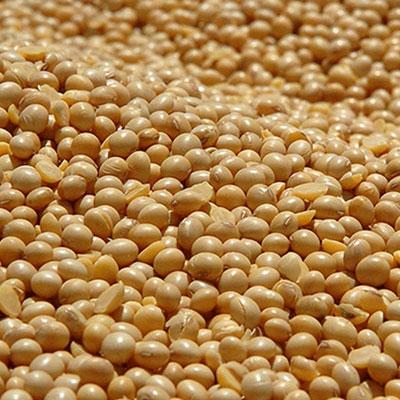The planting for the new Brazilian soybean crop advanced at a reasonable pace in the period between October 29 and November 4. Although in some states work has progressed well, in others it progressed very little due to excessive moisture. In Paraná, Mato Grosso do Sul, and Mato Grosso, the progress is satisfactory, while in the states of Goiás, São Paulo, and Minas Gerais, there was little progress. At national level, the pace remains above the five-year average for this time of year but slowed down in the last two weeks. If work does not progress well this week, the pace may stay below average.
According to a survey carried out by SAFRAS & Mercado, until November 4, Brazilian growers sowed 55.9% of the total area expected for the country in 2022/23, which is equivalent to approximately 23.988 mln hectares sown, out of a total of 42.887 mln hectares estimated for planting. In the previous week, the index was 46.8%. In the same period last year, the percentage reached 64.6%, while the five-year average for the period is 54.1%.
In Rio Grande do Sul, of a total area estimated at 6.4 mln hectares, 7% were sown, or approximately 448 thousand hectares. In the previous week, the index was 4%. In the same period last year, the percentage was 16%, while the five-year average for the period is 14.6%.
In Paraná, 70% of the area destined for soybeans were sown, or nearly 4.025 mln hectares planted, out of a total of 5.750 mln hectares estimated for the state. In the previous week, the index was 47%. In the same period last year, the percentage reached 80%, while the five-year average is 78.4% for the period.
In Mato Grosso, out of an expected total area of 11.85 mln hectares, 94% have already been sown, equivalent to approximately 11.139 mln hectares. In the previous week, the index was 84%. In the same period last year, the percentage was 96%. The five-year average for the period is 84.8%.
In Mato Grosso do Sul, the planting is 73% complete of a total area estimated at 3.85 mln hectares, equivalent to roughly 2.811 mln hectares. In the previous week, the index was 60%. In the same period last year, the percentage was 71%. The five-year average for the period is 70.8%.
In Goiás, out of a total expected area of 4.2 mln hectares, 62% were sown, equivalent to 2.604 mln hectares. In the previous week, the index was 60%. In the same period last year, the percentage was also 79%, while the five-year average for the period is 52.6%.
In São Paulo, out of a total area estimated at 1.25 mln hectares, 63% were sown, or approximately 788 thousand hectares. In the previous week, the index was 60%. In the same period last year, the percentage was 72%, while the five-year average for the period is 48.8%.
In Minas Gerais, out of an expected total area of 2.05 mln hectares, 35% were sown, or nearly 718 thousand hectares. In the previous week, the index was 30%. In the same period last year, the percentage was 65%, while the five-year average for the period is 43.2%.
In Bahia, from an area estimated at 1.85 mln hectares, 18% were sown, or the equivalent of 333 thousand hectares. In the previous week, the index was 6%. In the same period last year, the percentage was 35%, while the five-year average for the period is 16.2%.
Weather maps point to a period of lower moisture in the South, Southeast, and Midwest regions between November 4 and 10. The states of the North and Northeast regions must receive relevant rainfall.
Between November 11 and 17, the whole country must receive moisture again, with the states of the Southern Region receiving the highest accumulated volumes.

